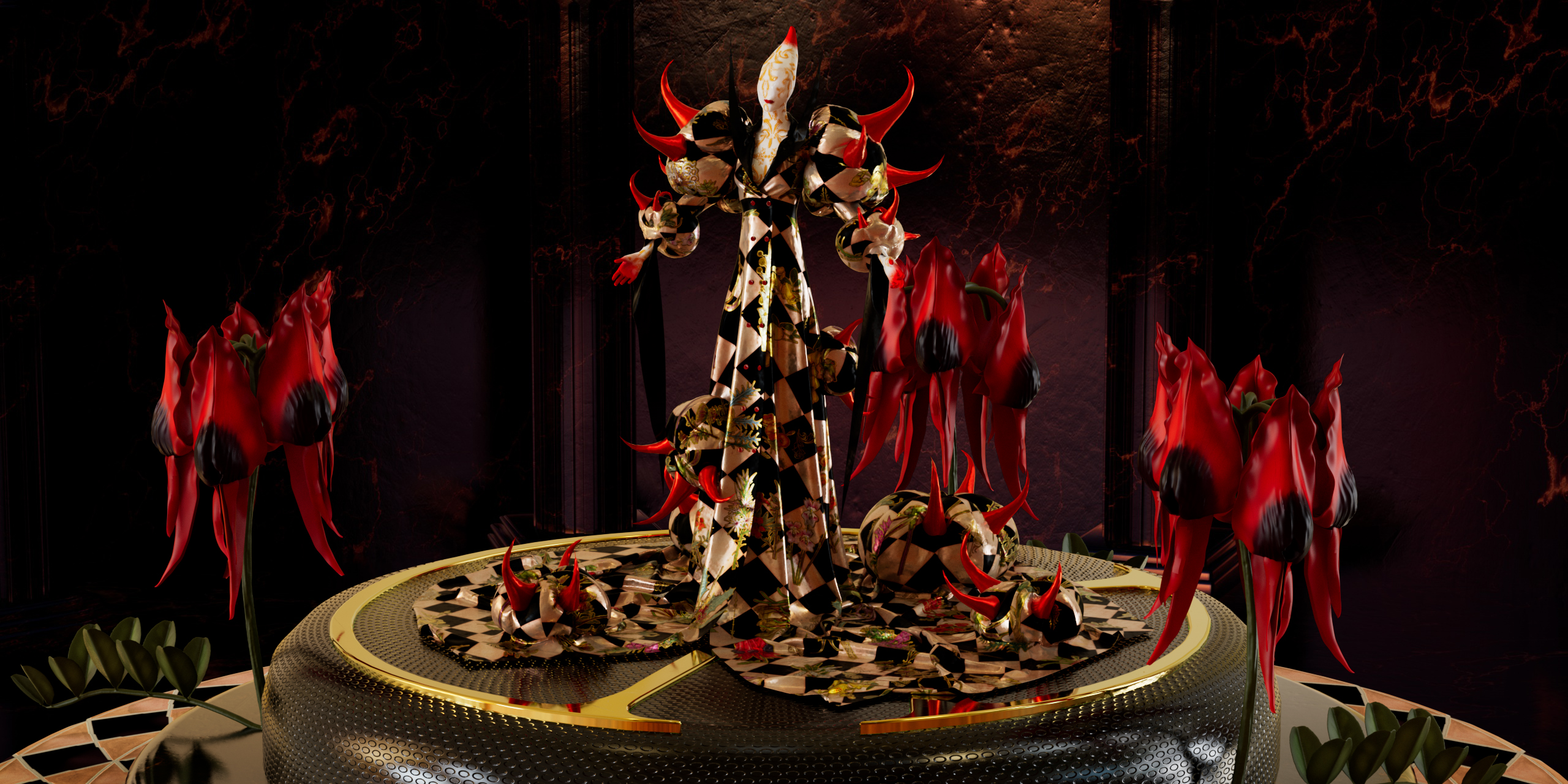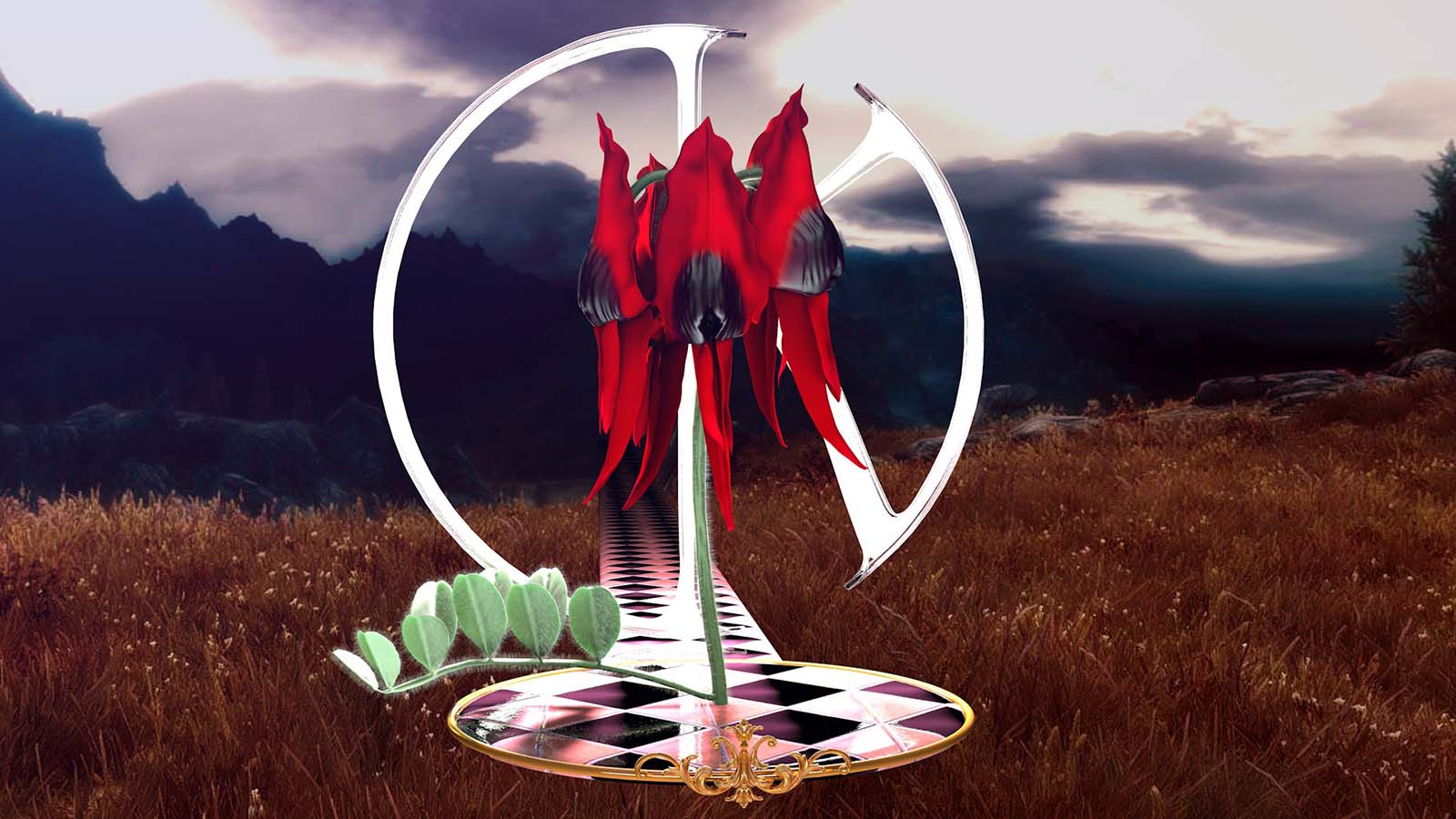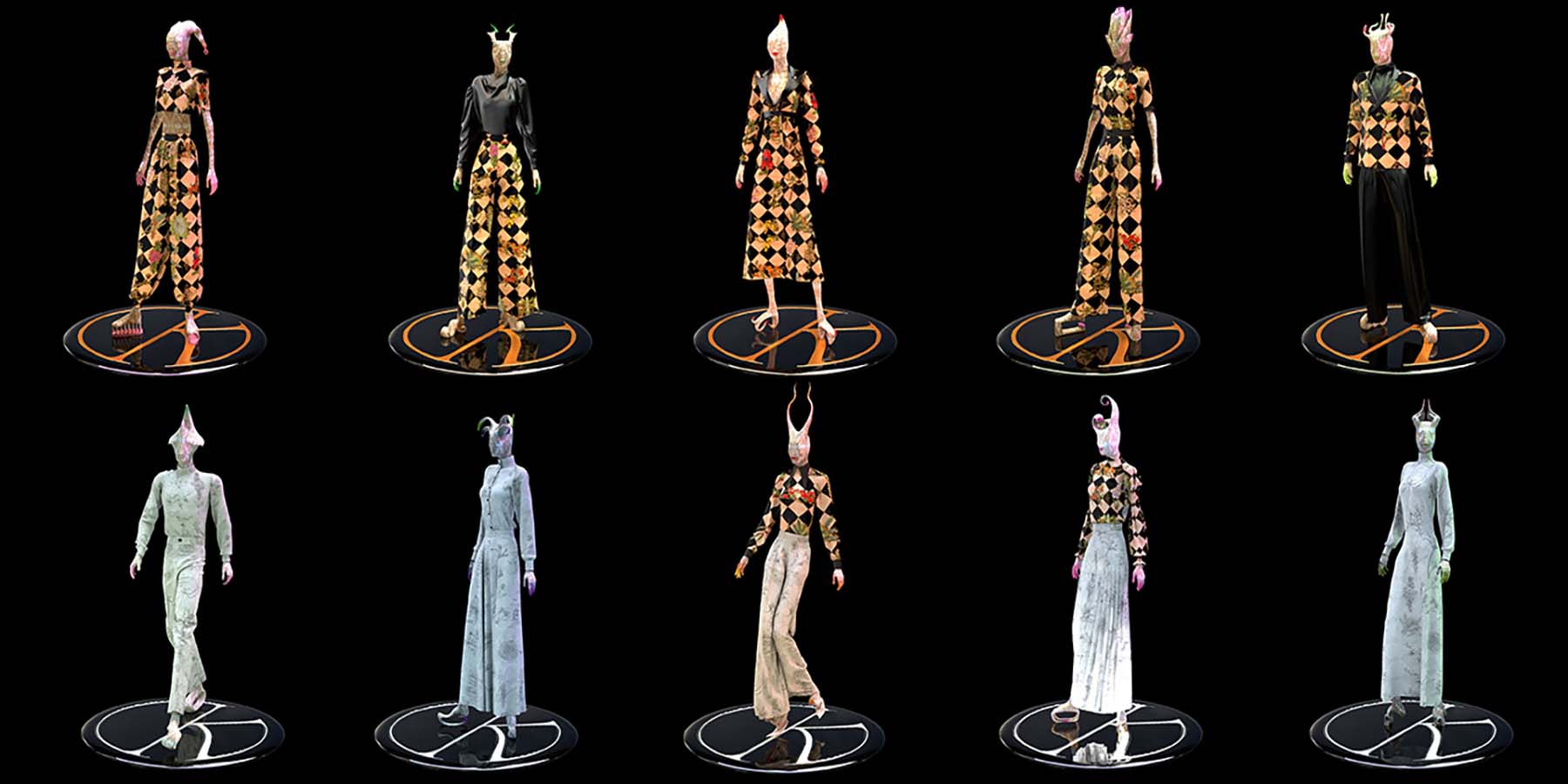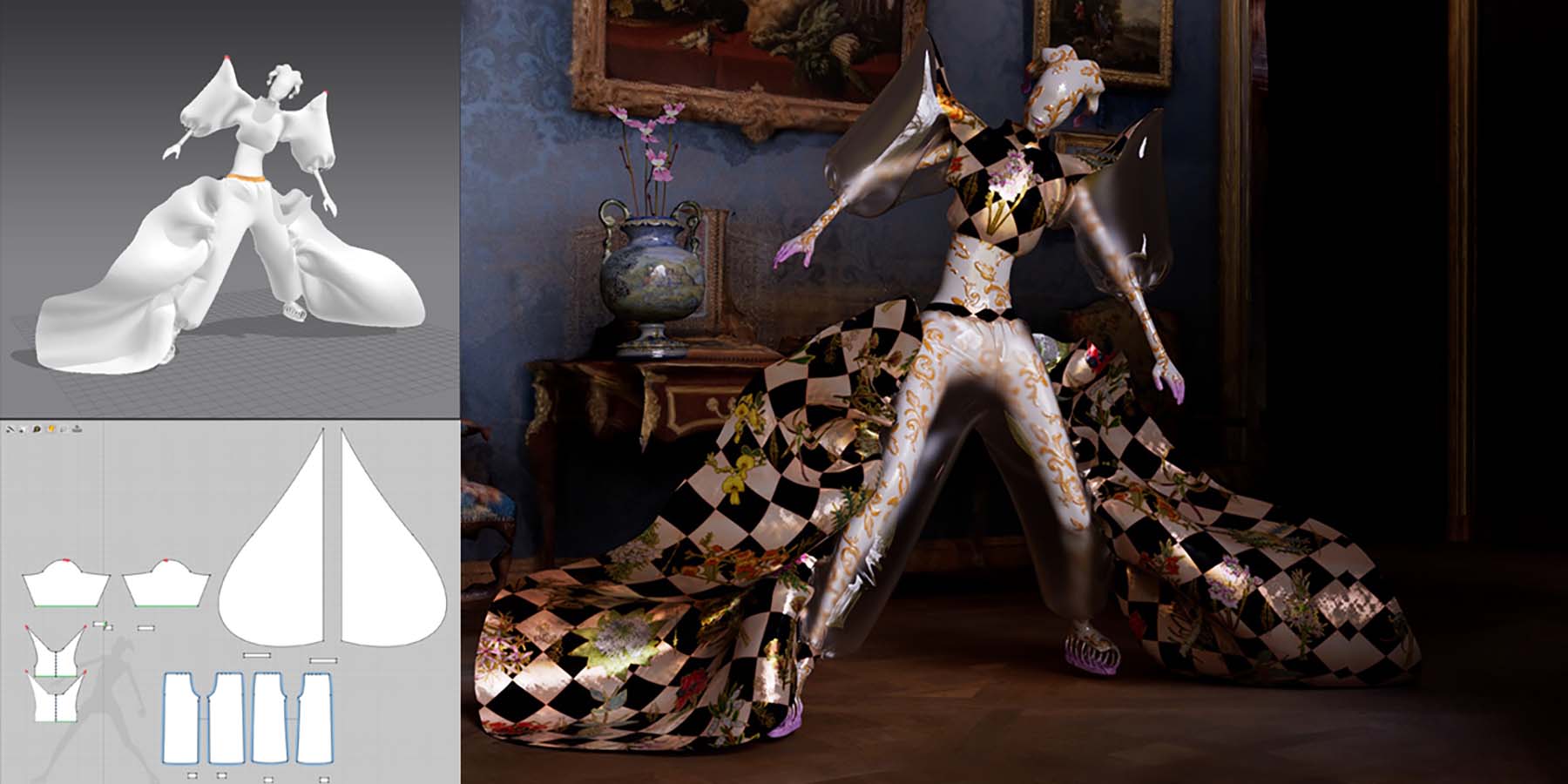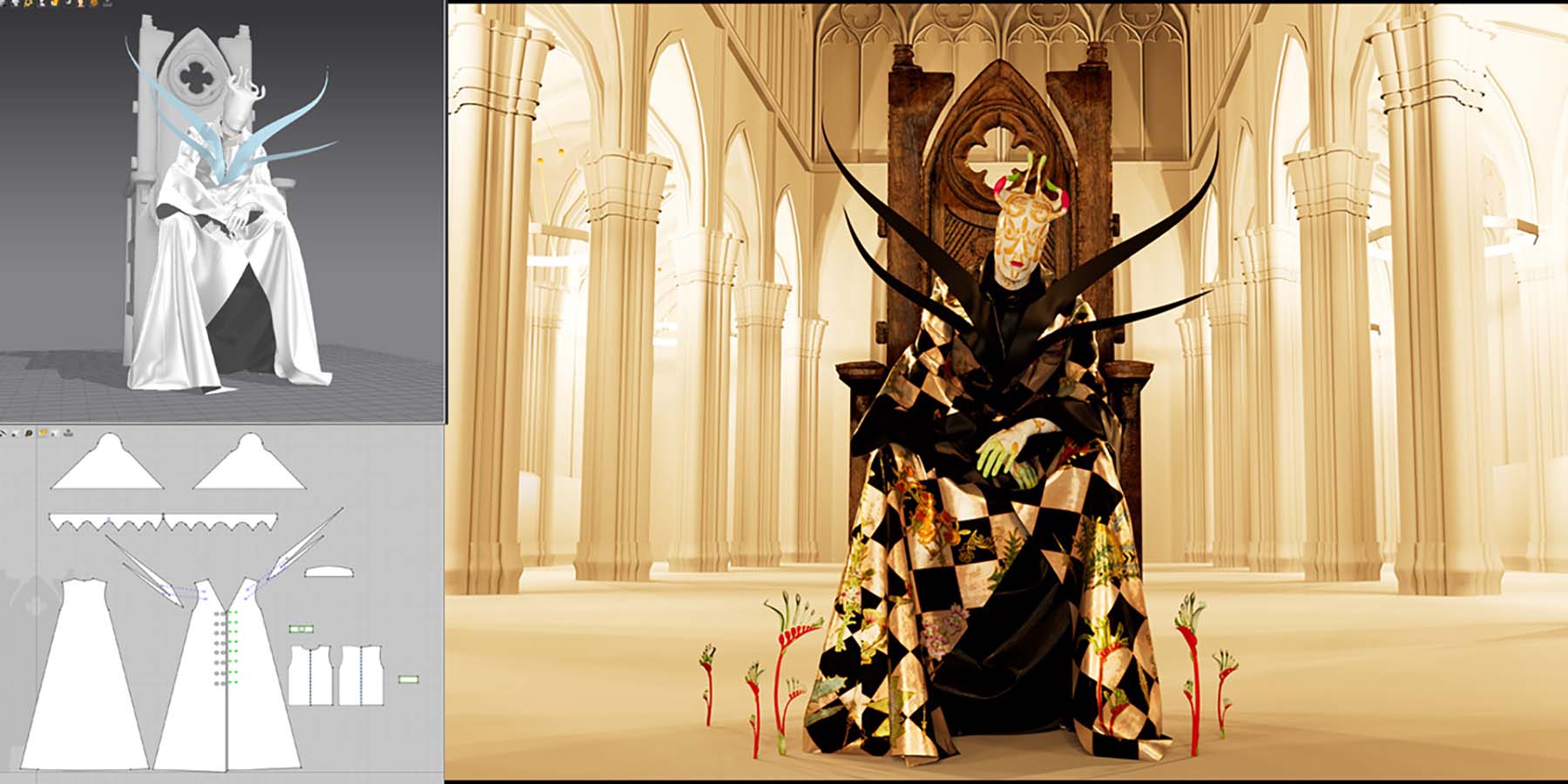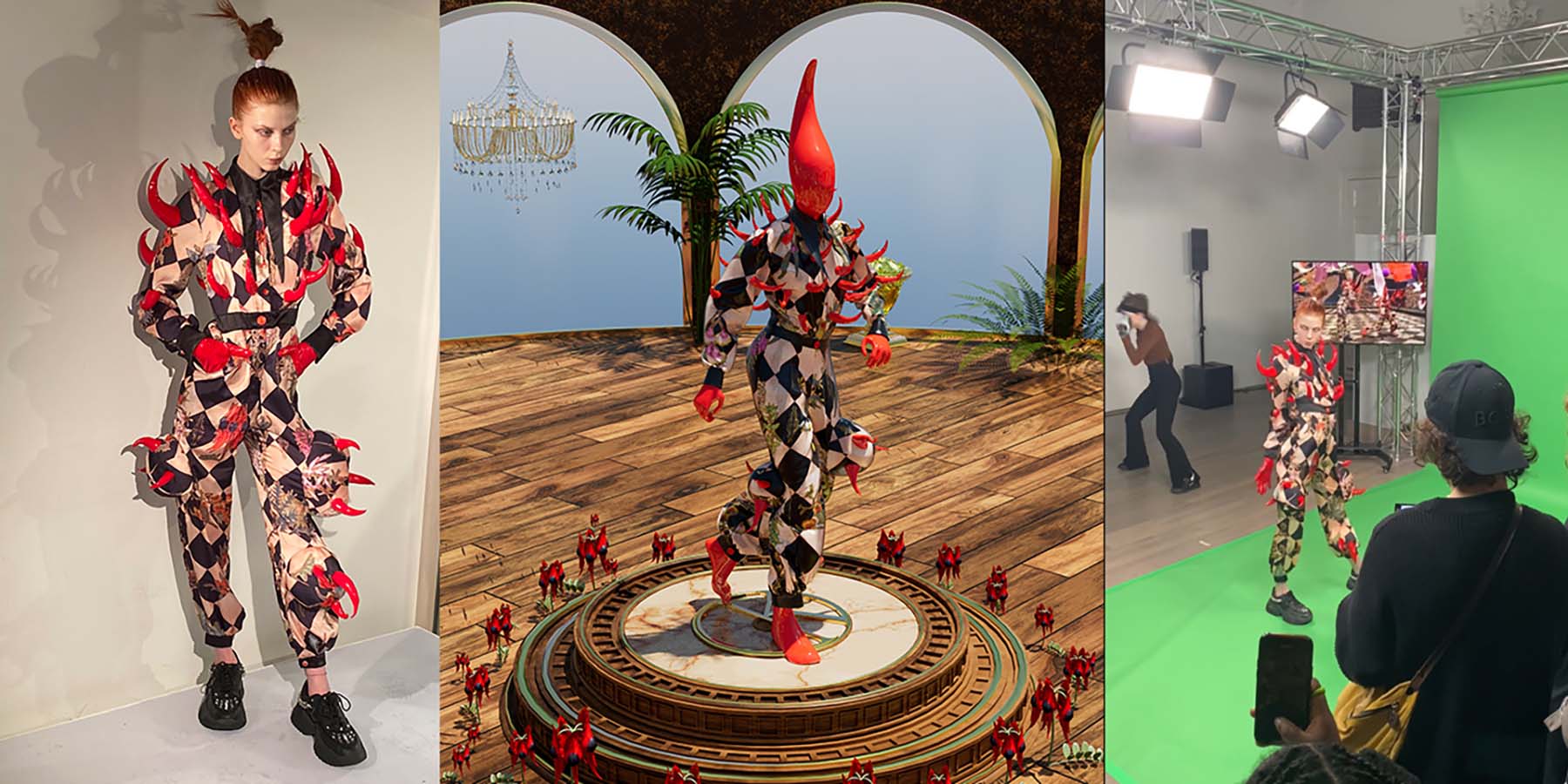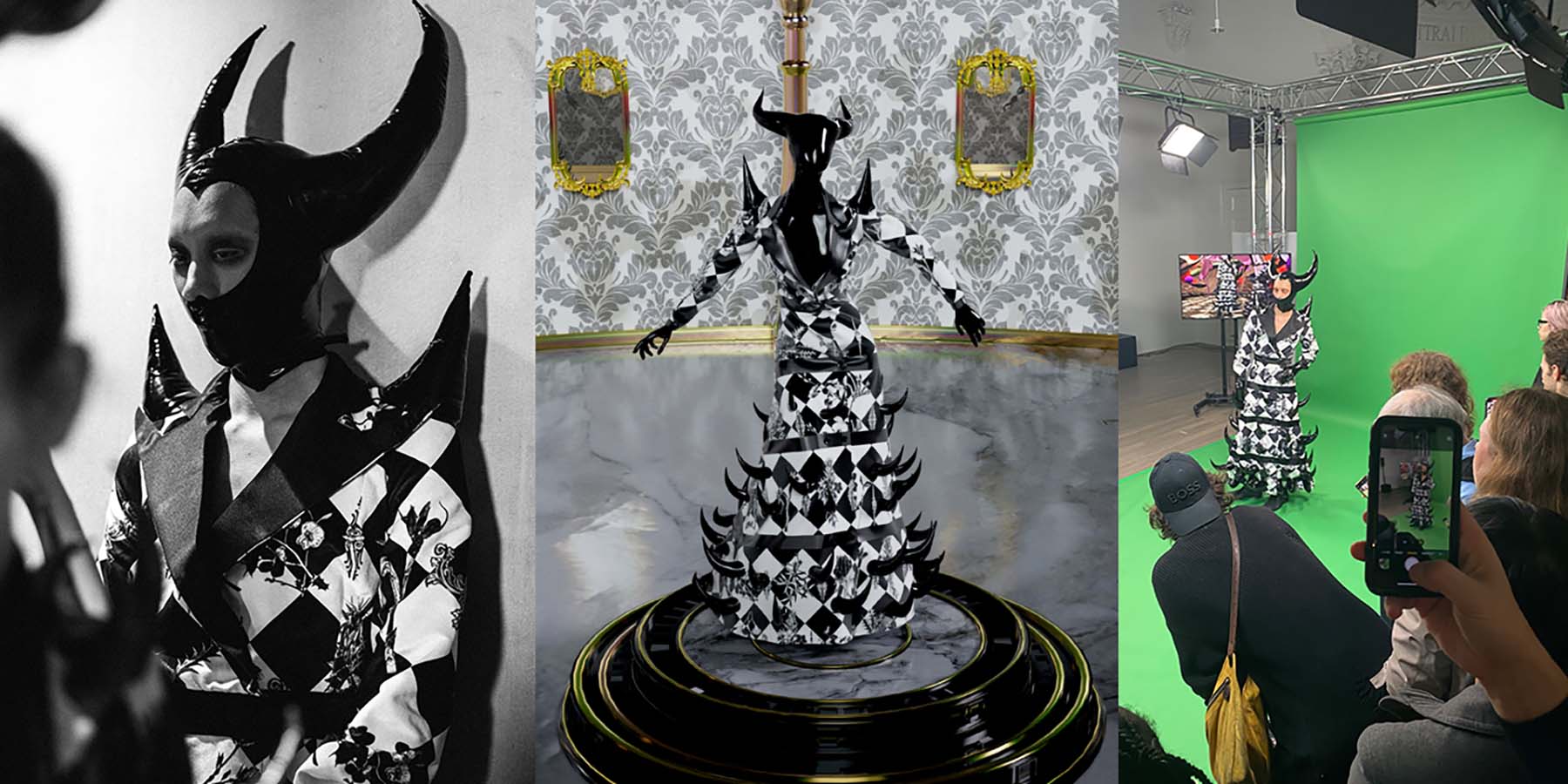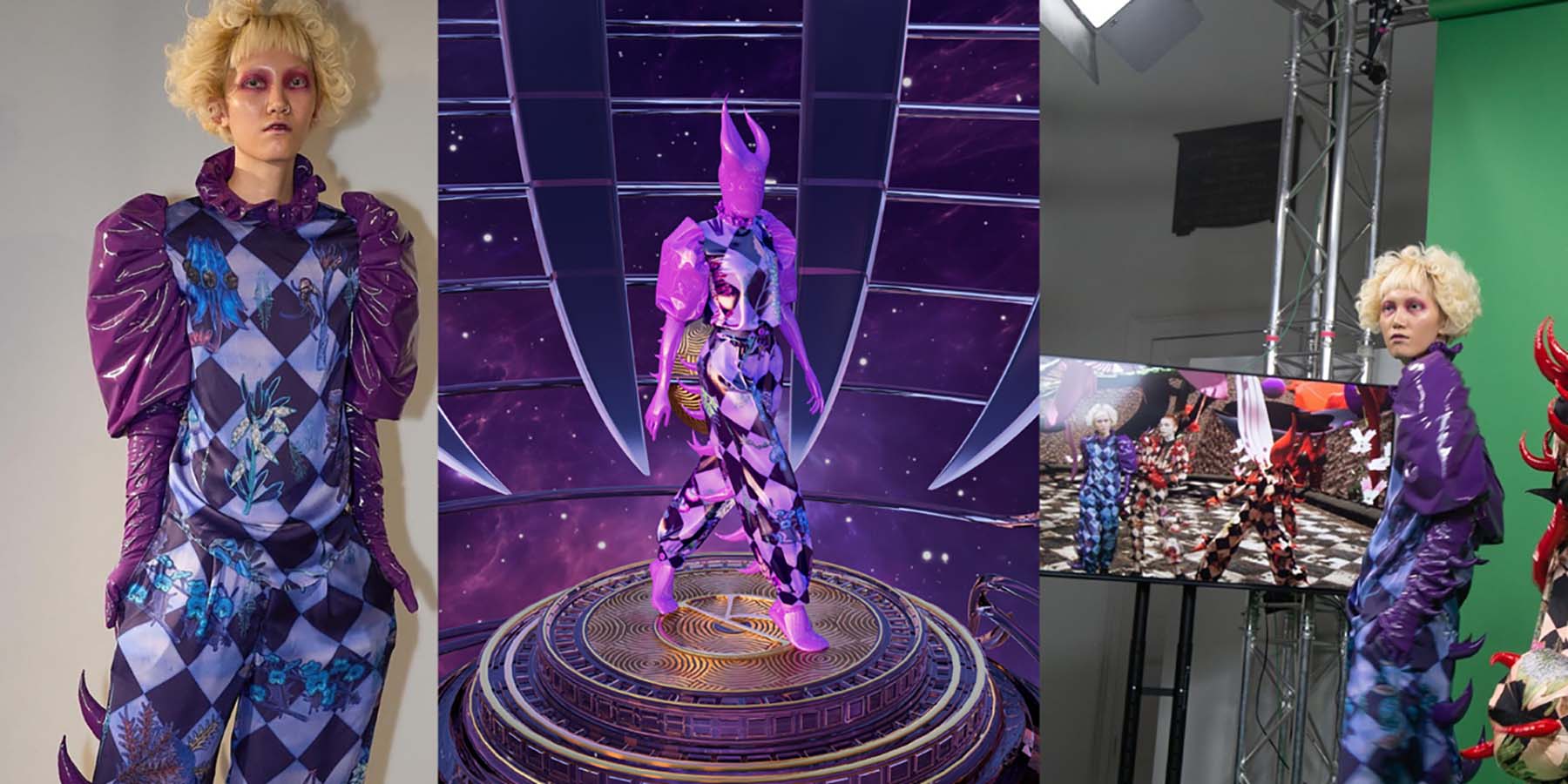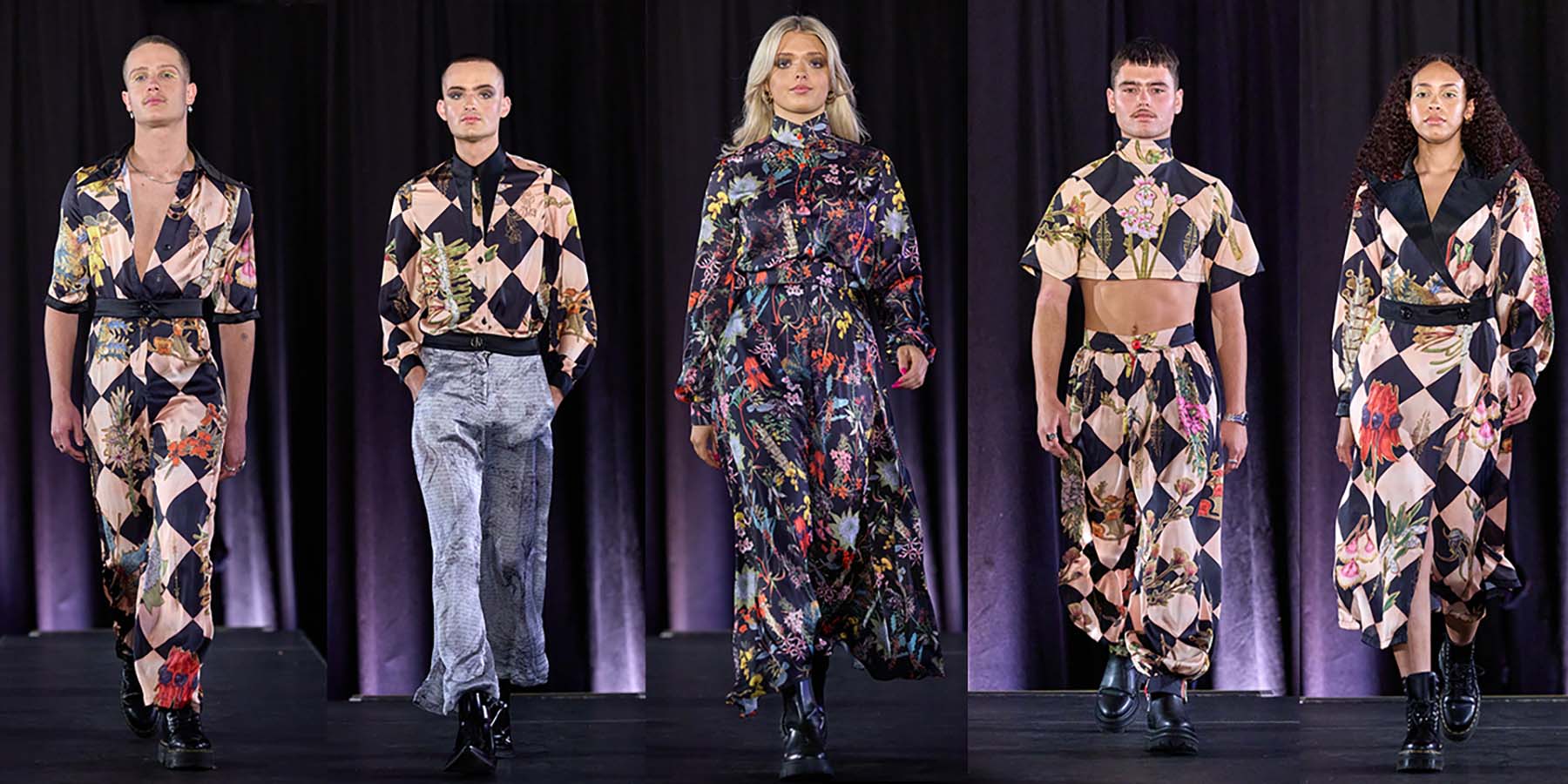Initially each prototype was sketched out and fully realised technically before they were then prototyped exclusively digitally. In the digital space the pattern pieces were assembled around a unique model, where alterations could take place, with findings, new geometries and measurements that were directly transferable to the physical pattern pieces. In this digital space, fabric type, weight and drape could be accurately and reliably simulated, allowing for few surprises when the final fabric was printed and ordered.
For the print, each flower was hand-drawn on a large scale and then assembled into a repeating print in Photoshop with the intent that the overall print design would be large, modern, attention-grabbing, and bold, rather than more intricate and detailed, due to the nature of digital fashion communication and the way in which the public interact with visual media online. Inspired by multiple conventional archetypes in fashion, the designs are intended to be modern and genderless, relying only on the essential geometries of the body rather than projecting any gendered expectations onto the body.
This ethos also dictated the kinds of digital avatars created to represent the collection – faceless, genderless, and part of the overall visual communication. The overall feel of the collection was inspired by Robert Thornton’s book Temple of Flora (1807), where unique hand-drawn flowers were represented in highly detailed and dramatic environments. The Digital Temple of Synthetic Flora was a project intended to demonstrate the exciting continuum between past and present artistic and technical execution, while emphasising that the unique hand of the designer need not be lost in the transition; that digital spaces can be enriched by physical expertise, skills, and craftsmanship. This was the primary consideration throughout each phase of the digital and physical design process.

